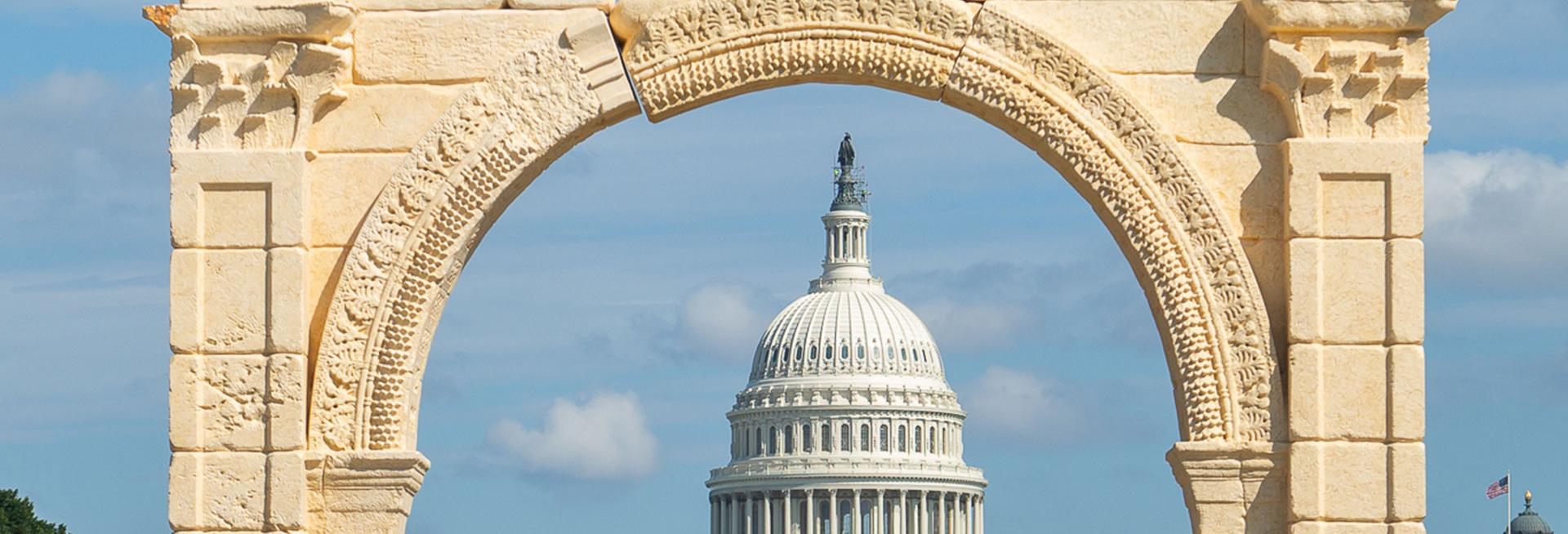Dr Alexy Karenowska identified an unexpected application for her fundamental research into microwave magnetic systems: creating detail-rich 3D models to help at-risk cultural heritage.
Since 2012, Dr Karenowska’s academic research has been focused at the interface between fundamental and applied microwave magnetism; she has developed a range of approaches to the investigation of microwave magnetic (spin-wave) systems. In a pure research context her work is particularly geared towards the experimental study of microwave magnetic structures at the level of individual quasiparticles (magnons and photons). As well as developing systems of practical utility, one of the overarching goals of this work is to visualise and understand the propagation of magnetic excitations and how they interact with their environment: most especially, how the presence of surfaces and surface imperfections, macroscopic geometries, and 2D and 3D structuring influence their behaviour. Against this background, a common thread through Karenowska’s experiments is the use of spin waves as a probe to explore the properties of the magnetic structures they inhabit.
Insight-rich datasets
Dr Karenowska’s investigations employ local, 1D measurements made using microwave circuitry together with carefully applied knowledge about the geometries and boundary conditions of the structure under investigation. The result? A high-quality, insight-rich dataset.
Colleagues working in cultural protection inspired Dr Karenowska to consider how her work could be used in the creation of 3D digital objects in the heritage sector. Ordinarily, digital renditions of significant monuments and buildings relied on high-resolution stereo videography and laser-based scanning. With at-risk heritage however, these techniques are often impractical: the sheer size of a monument could make it difficult to scan using laser-based techniques while access in an active conflict zone poses its own unique challenges. And, if relics have been damaged or destroyed altogether, these methods simply aren’t possible.
Engineering-quality 3D models
In 2015, Dr Karenowska demonstrated for the first time that photogrammetry, the process of creating digital models using ordinary photographs rather than expensive scanning equipment, could be used to create engineering-quality 3D models of architectural-scale heritage objects – in the same way that data from microwave circuits could be used to obtain information about spin-wave propagation.
Dr Karenowska recognised that, though groups of poor- or variable-quality images of architectural structures could not be used to create good-quality models using industry-standard automated techniques, useful information could nevertheless be extracted from them – a procedure directly related to her research.

In the first step of the modelling process, a set of constraints are extracted; basic geometrical information can be obtained even from data that appears poor resolution and/or poor quality such as the edges of objects and the relative size of their constituent parts. Known material properties and sample dimensions refine the model and it is further tuned using, for example, higher-resolution close-ups of localised surface features. It was clear to Dr Karenowska that physical models derived from computer-based renderings produced in this way could have a range of applications: they could be used to produce quality tactile renditions of large-scale heritage objects otherwise inaccessible to those with sight impairments, or used in conjunction with large-scale 3D machining technologies to produce full- (or at least, large-) scale reproductions.
Preserving Palmyra
Dr Karenowska was able to put her work to the test by leading a project to produce a reconstruction of a third-century triumphal arch demolished by the group calling itself Islamic State in Palmyra, Syria. The Institute for Digital Archaeology collaboration also included the then-head of the Directorate General of Antiquities and Museums in Syria. Data were gathered by crowdsourcing images between December 2015 and January 2016 and were used to produce a digital model. Using this dataset, a 1:3 scale facsimile was milled from solid marble and the replica arch was first revealed to the public in London’s Trafalgar Square in April 2016 by the then Mayor of London, Boris Johnson.
Dr Karenowska’s work captured the imagination of the world and the arch went on to travel to the USA, the UAE, Italy, Switzerland and Luxembourg at the invitation of a range of science and heritage-related government and non-government organisations. As well as those that saw the arch in person, millions more people were able to read about it thanks to extensive coverage in newspapers, magazines and online news outlets. The project was judged by the New York Times to be ‘the most talked about public art installation of the year’ and it prompted extensive debate and discussion around the modern-day status of monuments and memorial objects; it has helped to define a new genre of public sculpture – the monumental heritage reconstruction.
Heritage for all
Maximising the rich dataset that underpins the work, Dr Karenowska went on to work with the Royal National Institute of Blind People (UK) and the National Federation of the Blind (USA) to present the work at tactile exhibitions for those with visual impairments in New York and Baltimore to great success.
The project exerted considerable influence within the sector of cultural protection and preservation as a whole. It stimulated policy discussions with such bodies as the United Nations, UNESCO, the US House Foreign Affairs Committee and the G7 nations and resulted in the British Council’s first heritage protection initiative in Syria during the conflict. It has also increased public awareness around heritage protection and preservation and the role that science has to play.
Inspiring the next generation
In 2017, the arch was installed in Arona, Italy, to coincide with the renaming of the local archaeological museum after the murdered Syrian archaeologist Prof. Khaled Al Asaad — a gesture inspired by the project. The project and its installation is credited with boosting local tourism by at least 50,000 and promoting a tolerant outlook in an area of Italy where the anti-immigration policies of the extreme political right have traction.
Dr Karenowska has also used the project as the basis for delivering highly successful educational activities and workshops, directly related to the science underpinning the project reaching some 5,000 children in the UK, USA and Europe.

